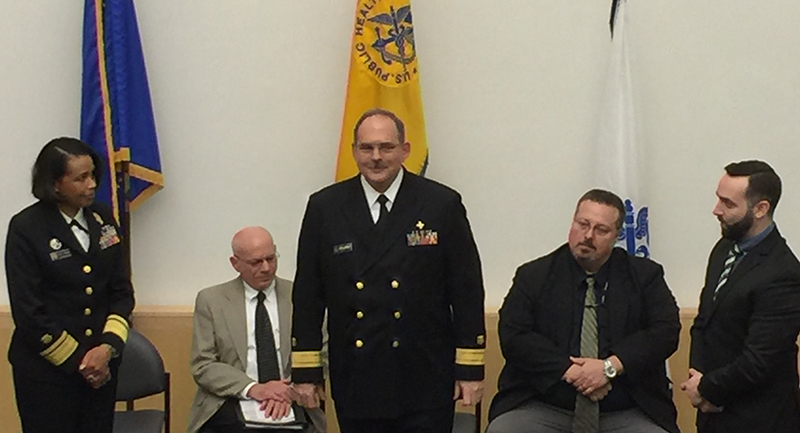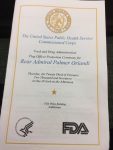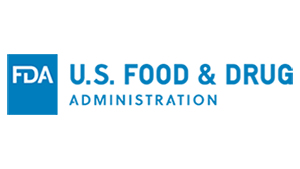Here’s a typical scenario.
You are the QA Manager for a dairy manufacturing facility in the Midwest. It’s been a long week and you decide to come in a little earlier than normal to catch up on paperwork. You find out when you arrive that product is on hold because the filling line is down. Maintenance is all over the machines, and orders are piling up; the paperwork will have to wait. You head out to the line to see what you can do to help.
This only happens when the plant manager is on vacation, you think to yourself.
As you walk out to the floor, your ears perk up as you hear your name paged over the intercom. The receptionist needs you in the front office—immediately.
What now?
You can’t think of anyone who is scheduled to visit today. You heart sinks a little. You don’t like surprises and this could be a bad one.
You come around the corner to the lobby to see exactly who you were hoping you wouldn’t see: An FDA investigator.
“My name is Investigator Brown,” he says as he flashes a badge. “We’ve had an allegation of an illness from your product. I am here to look into it.”
You smile politely and nod. He does not smile. You motion for him to follow you to a conference room.
Your day just got a whole lot longer.
How will this go?
The answer to that question is, in many ways, up to you.
FDA investigators are people and they take their job as seriously as you do. They are there because they need answers. Their boss expects answers. If people are getting sick, they need to find out quickly and take action. If this is truly the case, you need to know as well. So does your boss. No one wants people to get sick.
The absolute wrong thing to do in this situation is to not have a plan. You need to know how to handle a regulatory inspection. You need a plan to prevent a misunderstanding or create a situation where something minor gets blown out of proportion.
This is not the time to play it by ear. You need training and you need a plan.
An important point to remember is that your product may not have caused the illness. People often assume the last food they ate is the one that made them sick. In reality, incubation times may take significantly longer for symptoms to manifest. Samples of the product in question are rarely available to test. Dosage, health of the person, and other factors also come into play. You need to work with facts and not supposition—as does the FDA.
Tips for an FDA Inspection
- You are guilty until proven innocent
- You are not alone
- You are the company spokesperson
- Take lots of notes
- Seek first to understand, then to be understood
- Answer the question being asked
- Know what is in scope and what is out of scope
- Don’t sign or initial anything
1. You are guilty until proven innocent
In general, you can assume that FDA thinks you are at fault; that is why they are there. You will have a hole to dig yourself out of before you can convince them otherwise. Don’t let that rattle you, they are only doing their job, and your job is to show them all the great food safety programs you have in place to prevent what they are concerned about. Keep this in mind as you go through the visit. If you are doing a good job, you should see their demeanor soften as they gain confidence in what you do.
2. You are not alone
Don’t be a hero, you need a team to help you in this situation. You need the people in the plant and you need people at corporate ready to back you up. You most likely also need access to outside counsel that specializes in food regulations. Your role in the room is to facilitate and work with FDA to get them what they need. You and FDA are on the same side of the table in this respect. Both of you are working to find out if the illness is real.
If you are not sure of an answer, say so! Call corporate QA and your legal counsel and discuss it. Find out what the answer is from someone who does know. If you still don’t have an answer, it’s better to admit it than to make something up. Tell them when they can expect an answer, even if it may be after the audit concludes. Never make stuff up.
3. You are the company spokesperson
The company should have only one voice (most likely, you) responding during the inspection. This avoids confusion and keeps you in control over the message being delivered. Other agencies, such as OSHA, have the right under the law to interview employees during an investigation. It is not that clear cut with FDA. Make sure you explain to FDA that you are the designated spokesperson for this inspection and that all questions need to be routed through you. The personnel in the facility need to understand this as well and defer to you if FDA questions them. If the question is out of the ordinary, it may need to be in writing. When on the floor, never leave the investigator alone, accompany them at all times (don’t go crazy, they can use the bathroom by themselves).
4. Take lots of notes
Have someone who can tag along with you to take written notes of the visit. Train them on what you expect. Time stamp the notes and use a stream of consciousness approach. Write down everything, more notes are preferred. You may need them in the future. Never take the notes yourself, you are going to be too busy to do that. Mark the notes confidential and do not give a copy to FDA. Also, make sure that you have a clear and explicit ‘no photography’ policy in place. Train your people and enforce it. FDA may want to take pictures and they will tell you that they have the right to do so. That is open to debate and the issue has yet to be resolved in court. In the meantime, your policy is clear, so insist that they do not take pictures. This is your plant and your proprietary process; even with the best care, your competitors might find out more than they should about what you do.
5. Seek First to Understand, then to be Understood
This rule applies everywhere in life, and especially during an FDA inspection. Gather all the information you can. Are they going to take samples? If so, you need to prepare for that. Ask for the purpose of the visit and any supporting information you can get. Seek to first meet the needs to the investigator and to understand the exact context of the inquiry. The better you understand the purpose, the easier the day will be. Just like the investigator, you have a boss. You have limits to what you can and cannot do. Make sure the FDA understands that you are the representative, but the answer may need to come from other sources. Company policies are not written by you and cannot be altered. You are both on the same side of the table and rules need to be followed. They will understand and respect that.



























